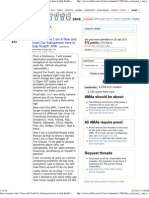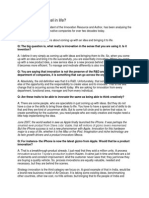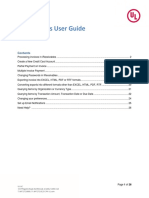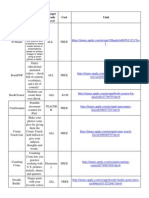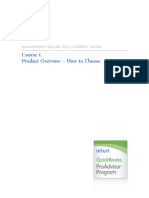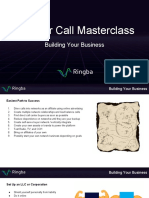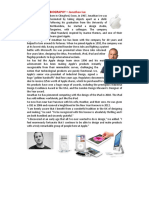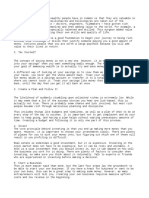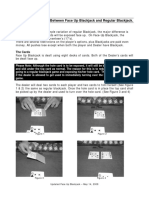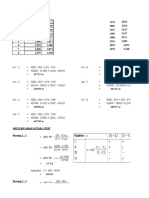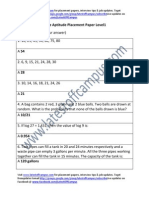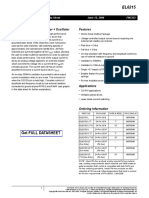The Path to Wealth
Step 1: Set your financial freedom baseline. This is the minimum goal you are trying to attain to
satisfy your own personal desire and needs. There are a few things to take into consideration
when determining this number. Feel free to adjust these to better match your own goals. 1) Your
house. For most single people, this number is about $30,000 per year. 2) For a nice car, such as
the Porsche 911, taking into account insurance and other factors, this is about $24,125. 3)
Travel and Vacations. For three mid-range trips per year, your total comes up to about $5,000
per person. 4) Bills. Sticking with a single bedroom house in the city, this totals to about $3,000
dollars a year. 5) Food. For a balance between eating out, and home cooking, this is about
$5,000 a year. 6) Health Insurance. This is about $2,500 a year. 7) Leisure. Thai is any other
extra, non-necessary spending. You can estimate a budget of about $4,000 a year for this. Now,
add up your numbers for a total annual spend. In our case, this is about $75,325 a year. For
your Freedom Figure, or baseline, multiply this by 25. This is because of the rule of 25, which
tells us how much you will need invested to be able to take out how much you need each year
without ever running out. This is $1,883,125 in our example. If invested in a secure fund, such
as the S&P 500, which has had an average of a 14% return in the past, you can keep your
$1,883,125 invested and it will produce your expenses every year in gains. This way, as long as
you stick to your numbers, you can keep going for ever.1
Step 2: Hack you Life. This means using some basic tricks to help save money while still
maintaining your lifestyle. 1) Car hacking. Instead of being one of the 100 million Americans
who have outstanding car loans, and are paying an exorbitant amount of money for their cars,
you can use this simple trick. Buy a car quality used car, already at the bottom of the
depreciation curve. You can drive it for a few years, and sell it for close to what you bought it.
This helps lower expenses until you can acquire your financial baseline. 2) Brand Hacking. This
one is quite simple and just means choosing generic or store brand products over name brands.
These products are often the same or similar quality and the price difference can be quite
surprising. Studies show people can save a whopping 87% by using this strategy! As well as
being cheaper these products often even contain more than the branded ones. 3) House
hacking. Although this is not ideal for everyone for those who this works for it can make a major
difference. Buy a duplex or house with extra bedrooms, although this is a larger deposit upfront,
if you can rent out your extra space this can significantly lower or even eliminate your housing
expenses. This way your essentially living for free, all the while building equity on your home.
This works if your renting as well. Someone can rent a space for $4,000 a month, and if they
rent it at about $400 a day, reasonable for an airbnb with good location, you only have to rent it
out 10 days a month to cover your expenses. 4) Tax hacking. Take advantage of deductions. If
you have a small business, you can claim home office, internet, or travel as long as their used
1
Find an S&P 500 index fund, and as a rule of thumb, invest a consistent amount on a regular basis,
whether the market is up or down. This allows you to average out your investments, and not just
potentially buy in all at once when the market is high. Most trading apps allow you to set this up
automatically. Recommended app: Trading 212. This also allows you to automatically split your
investment in pies, diversifying your portfolio. Code: TILBURY
�for business. Anyone can open a tax free savings account such as Roth IRA. 5) Deal hacking.
This is negotiation. For example, if buying a car, never accept the sticker price. Instead, do your
research on the market value of the car, get quotes from other dealers, this allows you to say
‘Dealer 1’ offered me a cheaper price, and you can back it up. This puts you in a better position
in negotiations. The real way to find the value of a car is to pretend your selling the car you want
to buy. Visit a site like Carvana online and see the quote they give you to sell. You want to buy
at as close as possible to this price. Whatever it is your buying, never be afraid to ask for a
better price.
Step 3: Get a credit card. One of the biggest lies people are told is that credit cards are bad and
you shouldn't have one. People think they’re just a quick way to get into debt, but they are a
good tool to build your credit score if used wisely. Your credit score shows how reliable you are
with money. A better score means you can get better and easier loans, which can save you a
ton of money in the long run. A cool trick is to spend just under 30% of your credit allowance to
help increase your credit score. Always try to pay back on time and in full.
Step 4: Have at least one other income stream. If you’re serious about financial freedom,
building an extra income stream is key. If you have only one source of income, and say, you
lose your job, you’re stuck. If you have a side hustle, and you lose your job, or one of your
business ventures fail, you’re still supported, and can focus on growing these side hustles. This
is probably the most important step in this entire process. You should start a side hustle that
uses skills you already have. For a good area to focus on, you should find your value zone. To
define your value zone create a Venn Diagram (3). In one circle write the things you love. In
another circle write your skills. In the last circle write what people will pay you for. The overlap of
all three is your value zone. This is where you should focus pertaining to building a business
and/or side hustle. Next, you need to define and maximize your resources. Create a chart of
everything you do on a day-to-day basis. In each category define how much time, energy and
money you allocate towards that specific activity. Once you have the full picture of where your
resources are being spent, it becomes far easier to cut out the things that are taking the most
resources and are unnecessary. You can then repurpose those resources towards building your
wealth and career. This also helps to understand your limitations and buckle down on what
works best for you. Some good options for side hustles are affiliate marketing, freelancing,
e-commerce, window cleaning, car cleaning, etc. Most people say they don’t have enough time
or money. However, there ar 168 hours in a week. A typical 9-5 job takes 40 hours a week. Plus
about 56 hours a week of sleep, 10 and a half hours for meals, and about 10 hours for
commuting. That still leaves you with 50 extra hours in your week.
Step 5: Most people who take the traditional route when it comes to business, go to school,
study hard, and end up working a 9-5 job. Or, you can can take a different path. You can switch
to this path at any point. The first thing is to consume. This is to find a skill that will pay well, and
you have a t least some talent for, and learn as much as you could about it. Good ideas for this
are coding, graphic design, copywriting, web design, etc. Say you choose coding. You learn as
much as you could and build your first simple app, that's the second step, apply. You don’t need
to start with something fancy or a full project. Mark Zuckerberg didn’t make facebook as his first
�project. Then, learn from this process and consume again. Keep going until you have a
successful business model. The final step is educate. Once you have a business, and you’re
successful, teach others about your journey and how you made it. You may be wondering,
Won’t giving away my secrets impact my business? No. Only a very small percentage of people
who take your course will actually do something with it. You can turn your experiences into an
info product, or a course people will pay for and make a lot of money off it. And if you don’t tell
people how you did it, likely someone else will.
Step 6: It is well known that making your first $100K is the hardest, but once you reach that
point your net worth sky-rockets. Why is that? This is because of compound interest. If you
invest $10,000 at a 7% return rate, it will take nearly 8 years to reach $100K. From there, it will
take 5.1 years to reach $200K, 3.8 to reach $300K, and so on. But how do you make the first
$100K? Here comes in the GROWTH method. G stands for Gain control of your finances. This
is budgeting. This doesn’t mean being super tight with your money but you should have a clear
line between your needs and your wants. R is for Root your investments. If you invest $250 a
month, at a 7 percent return, in 40 years you’ll have $630K, and 530 of it is from compound
interest. However, 40 years can be a long time. That’s why getting this first $100K is important.
O is for Optimize your tax management. This means if you’re a business owner you can deduct
the costs of your business from your income tax. However, these expenses have to be
justifiable.2 W is Weed out debts. The average American owes $21,800 in debt. List out all your
debts and pay the ones with the highest interest rates first. This can save you a lot of money vs.
paying them off in no or opposite order. T is Tap into additional streams of income. We talked
about this in step 4. H is Heightened self-discipline. To put everything into effect you have to
control yourself and stick to these steps.
Step 7: Building Wealth from Nothing. You have to go against mass thinking. If you don’t believe
something is possible and you’re staying ‘realistic’ how are you going to achieve it? You have to
think from multiple angles when facing challenges. You should come up with around 10
solutions and decide the best way forward. If one doesn’t work, you can always move on to the
next one, instead of becoming discouraged and giving up. You have to step out of your comfort
zone. You can’t become anything if you aren’t willing to learn more, to go further. You have to be
willing to take a risk. Especially if your younger and don’t have anyone to look after, or many
responsibilities, you don’t have much to lose. The greater the risk the greater the reward. This
doesn’t mean risks shouldn’t be calculated. You still have to be smart about it. But if there’s a
decent chance that by risking some money you can earn much more, why not? You have to
make your money work for you. The more time you let your money grow, the more money you’ll
eventually have. Never invest in something you don’t understand. You should diversify your
investments so if one thing falls under you’re still safe. There is something called the three-fund
portfolio. It consists of three components. A total US stock market index fund, a total
international stock index fund, and a total bond market fund.3
2
In some states such as Alaska, Florida, Nevada, New Hampshire, South Dakota, Tennessee, Texas,
Washington, and Wyoming, there is no income tax and you can skip this step.
3
Trading 212 allows you to do all of this by investing in pies and automatically splitting your investment
amongst different stocks and ETFs.
�Step 8: This is not really so much a step as a compilation of key points from 40 different money
making books. 1) Master your mind. People are told ‘Money is the route of all evil.’ These kinds
of phrases program us to believe that rich people are bad. Ask yourself, what is money actually
for? For most people this answer is freedom. Some people say it's about control. The goal is the
same. To be able to live your life how you want. People set their targets too small, trying to be
‘realistic’ but then limit themselves from the chance of ever actually becoming successful. 2)
Develop good habits. Stressing about things outside your control is not healthy. You should try
to only focus on things you can actually impact. Many people focus on the end goal, which they
cannot control, instead of on the process of achieving this goal. A good trick is to pair a new
habit with an existing one, to make it easier to retain and develop, as well as being able to fulfill
two at the same time. A good habit is to always think about where you’re going, and how you
want to be remembered. This provides you with extra motivation. You shouldn’t rely on only your
brain for everything you have to do and to remember all your tasks. It is easy to forget and/or
lose sight of things this way. Instead, keep them on a notepad or someplace else. For every task
we say yes to, we often have to say no to many others. Once you have developed good habits
you can focus on, 3) Build high value skills. You should focus on building skills you already
have. However, with AI on the high, a lot of skills are being rapidly replaced. You should try to
develop a unique stack of skills that are nearly impossible to replicate. Everything we buy is
either an asset or a liability. To figure out which it is ask yourself, Is it giving you money, or taking
money? It is best to invest in a broad fund of the market. If you love the store, chances are you’ll
love the stock. To truly build this wealth, you have to actually put it into practice.One of the
hardest steps of building a business, for most people, is the ideas. To come up with ideas, think
of three things that annoy you every day, and think of how they can be done better. This will
leave you with 90 ideas a month to consider. You can take use of oversubscribed products. If
you have something a lot of people want and not many can have it drives up demand. Give out
certain things for free or little price so people are likely to come back and make a larger
purchase. It is well known it is far harder to get customers than to utilize existing ones. You can
overperform for new customers so they like you and come back, then you have them hooked,
and they stay with you. If you make an emotion based appeal when pitching a product, people
decide based on that they want it and then use logic to justify the decision and convince
themselves it is really a rational, thought-out decision. Good business men/leaders inspire you
to take action, not tell you. Keep people and your business dependent on you, become
irreplaceable, but make sure nobody is irreplaceable. Remember: Profit first. Use a simple
calculation, sales - profit = expenses. This ensures you are always profitable. Contrary to
popular belief, it is better to be very good in one area than so/so in all areas.
Step 9: Every time you get paid, you should bring your wants down to 25%, your needs down to
25% as well. This leaves you with 50% which should go straight toward paying off debt, and
then to be invested in a low risk fund, (30%) and more high-risk (20%). This is until you’ve made
your first $100K or better yet, hit your financial baseline.
� Chapter 2:
Delving into different income streams, and money generating ideas.
1: Retail Stores. People think online stores are the only way to go. Although it can make sense,
physical stores still work and can yield high results. It may seem that starting a physical store
requires a lot of upfront money, and the rich get richer. But it doesn’t have to be that way.
Although it seems daunting, you can pretty easily receive funding, if the idea is good enough
and you are able to execute it. Step 1: Write a business plan. I recommend finding a location,
figuring out how you’re going to attract customers, how much startup capital you need, how
you’re going to allocate that money, and finally, how much you expect to earn. You should have
a business plan like this anyway before trying to start a business. If you’re having to much
trouble doing this, it's likely the idea just isn’t realistic. You can always find a free business
model template online to make it easier and more professional. Step 2: Customer Research.
You need to find a way to make sure your business idea will actually work. You can ask real
people what they think about the idea and what should be done different. One of the best ways
to do this is to get a part-time job at a potential competitor, allowing you to speak with live
customers and experience the business first hand. You can do this the old-fashioned way by
going from bank to bank trying to get a loan until someone believes in your idea, or use
alternative solutions online, such as kickstarter. Ranking: Time: ⅖, Money to manage: ⅘, How
easily can you earn $100 a week?: 5/5. These ranking will be 1, 2, and 3 from now on.
2: Selling Dead Stock. You can approach owners of some failing company and offer to sell their
stock they can’t sell on ebay for a commission. Once you start making more and more money,
you can buy directly from suppliers, or buy failing businesses completely. 1. 4/5, 2. 5/5 3. 5/5
3: Real Estate. You buy high-potential properties and rent them out. It should pay for itself, and
bring in some extra cash. Plus, once you have it paid off, you’re sitting on an asset of however
much that house is worth, generally over $100K. Any additional income from the property will
then be pure profit, and you can always get a nice chunk of cash if you decide to sell.
Potentially, you then sell the house for $150K and use the money to mortgage 5 more similar
houses at $30K each, You make $5000 a month from this, plus, in five years you’re sitting on
nearly $1M in assets. 1. ⅗, 2. ⅕, 3. 5/5. However, not many people have enough capital to spare
on real estate. In comes #4.
4: Deal Sourcing. This one is quite simple. You find a good property and recommend it to
someone who does real estate. You receive a commission, until you have enough cash to do it
yourself. Step 1: Learn as much as you can about Real Estate. This includes the market,
property values, and investment strategies. Step 2: Build a network. Connect with real estate
investors, property managers, etc. Step 3: Find deals. 1. ⅗, 2. 5/5, 3. 5/5.
5: Affiliate Marketing.



